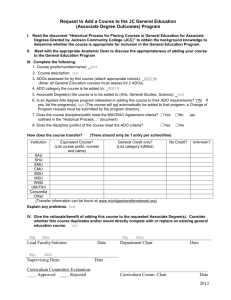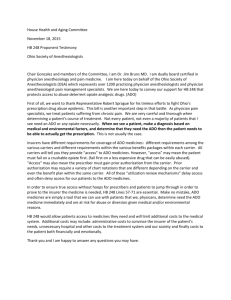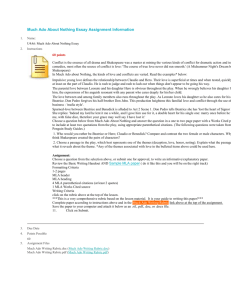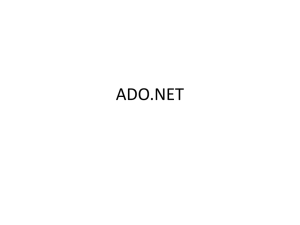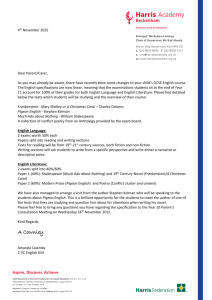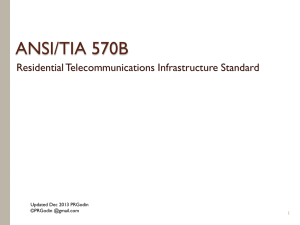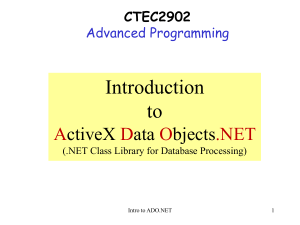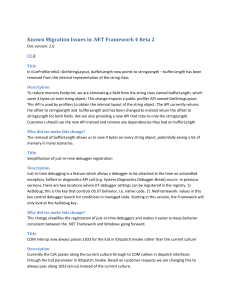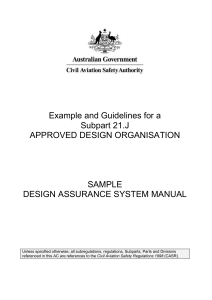EF Class Notes
advertisement
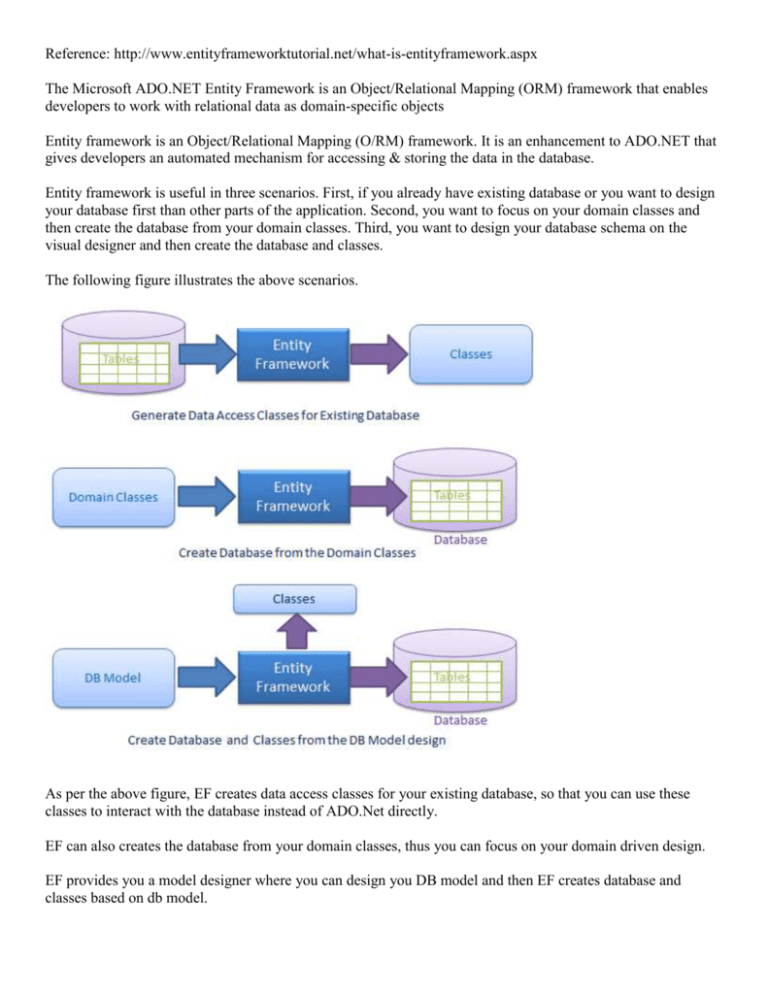
Reference: http://www.entityframeworktutorial.net/what-is-entityframework.aspx The Microsoft ADO.NET Entity Framework is an Object/Relational Mapping (ORM) framework that enables developers to work with relational data as domain-specific objects Entity framework is an Object/Relational Mapping (O/RM) framework. It is an enhancement to ADO.NET that gives developers an automated mechanism for accessing & storing the data in the database. Entity framework is useful in three scenarios. First, if you already have existing database or you want to design your database first than other parts of the application. Second, you want to focus on your domain classes and then create the database from your domain classes. Third, you want to design your database schema on the visual designer and then create the database and classes. The following figure illustrates the above scenarios. As per the above figure, EF creates data access classes for your existing database, so that you can use these classes to interact with the database instead of ADO.Net directly. EF can also creates the database from your domain classes, thus you can focus on your domain driven design. EF provides you a model designer where you can design you DB model and then EF creates database and classes based on db model. What is O/RM? ORM is a tool for storing data from domain objects to relational database like MS SQL Server, in an automated way, without much programming. O/RM includes three main parts: Domain class objects, Relational database objects and Mapping information on how domain objects map to relational database objects (tables, views & storedprocedures). ORM allows us to keep our database design separate from our domain class design. This makes the application maintainable and extendable. It also automates standard CRUD operation (Create, Read, Update & Delete) so that the developer doesn't need to write it manually. Typical ORM tool generates classes for the database interaction for your application as shown below. Visit wikipedia for more information on Object-relational Mapping There are many ORM frameworks for .net in the market like DataObjects.Net, NHibernate, OpenAccess, SubSonic etc. Entity Framework is an open source ORM framework from Microsoft. Entity Framework Architecture The following figure shows the overall architecture of the Entity Framework. Let us now look at each component of the architecture individually: EDM (Entity Data Model): EDM consist three main parts- Conceptual model, Mapping and Storage model. Entity Data Model is a model that describes entities and the relationships between them. Conceptual Model: The conceptual model contains the model classes and their relationships. This will be independent from your database table design. Storage Model: Storage model is the database design model which includes tables, views, stored procedures and their relationships and keys. Mapping: Mapping consist information about how the conceptual model is mapped to storage model. LINQ to Entities:LINQ to Entities is a query language used to write queries against the object model. It returns entities, which are defined in the conceptual model. You can use your LINQ skills here. Entity SQL: Entity SQL is another query language just like LINQ to Entities. However, it is a little more difficult than L2E and also the developer will need to learn it separately. Object Service:Object service is a main entry point for accessing data from the database and to return it back. Object service is responsible for materialization, which is process of converting data returned from entity client data provider (next layer) to an entity object structure. Entity Client Data Provider:The main responsibility of this layer is to convert L2E or Entity SQL queries into a SQL query which is understood by the underlying database. It communicates with the ADO.Net data provider which in turn sends or retrieves data from database. ADO.Net Data Provider:This layer communicates with database using standard ADO.Net. Reference: https://msdn.microsoft.com ADO.NET ADO.NET is a set of classes that expose data access services for .NET Framework programmers. ADO.NET provides a rich set of components for creating distributed, data-sharing applications. It is an integral part of the .NET Framework, providing access to relational, XML, and application data. ADO.NET supports a variety of development needs, including the creation of front-end database clients and middle-tier business objects used by applications, tools, languages, or Internet browsers. ADO.NET provides consistent access to data sources such as SQL Server and XML, and to data sources exposed through OLE DB and ODBC. Data-sharing consumer applications can use ADO.NET to connect to these data sources and retrieve, handle, and update the data that they contain. ADO.NET separates data access from data manipulation into discrete components that can be used separately or in tandem. ADO.NET includes .NET Framework data providers for connecting to a database, executing commands, and retrieving results. Those results are either processed directly, placed in an ADO.NET DataSet object in order to be exposed to the user in an ad hoc manner, combined with data from multiple sources, or passed between tiers. The DataSet object can also be used independently of a .NET Framework data provider to manage data local to the application or sourced from XML. The ADO.NET classes are found in System.Data.dll, and are integrated with the XML classes found in System.Xml.dll. For sample code that connects to a database, retrieves data from it, and then displays that data in a console window. ADO.NET provides functionality to developers who write managed code similar to the functionality provided to native component object model (COM) developers by ActiveX Data Objects (ADO). We recommend that you use ADO.NET, not ADO, for accessing data in your .NET applications.

